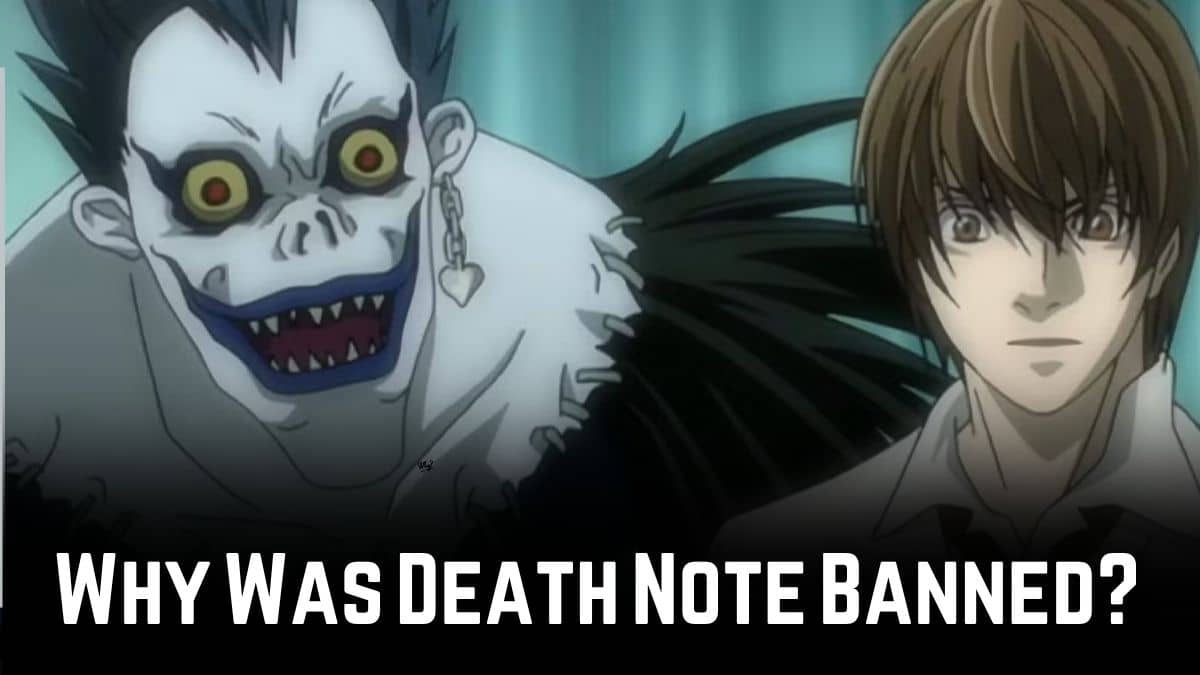Death Note got banned in countries such as China and Russia when authorities noticed students were mimicking parts of the story in troubling ways. While this was going on, schools across the U.S. and even in other parts of the world had to take action against kids who made their own versions of those “death notebooks.” You see, the fight shows how fiction, when written strongly, doesn’t just stay in books. It creeps into life.
Bans in China: Fiction Fueled Imitators
Back in early 2005, schools in Shenyang, China decided to ban the Death Note manga completely. Kids in school were actually making look-alike notebooks and writing names of their friends and teachers in them, just like that dark story from the series.
A student from middle school shared with a local newspaper that many kids in school had Death Note-style notebooks, where they’d write down the names of teachers they didn’t like, especially when studying got too hard. Parents and teachers believed those notebooks were dangerous, claiming they turned innocent minds wicked. To stop it from spreading, schools banned all such stationery.
In 2007, the buzz around Death Note in cities like Shenzhen grew so loud that officials stepped in, collecting over 180 fake copies from shops and officially banning them. They were worried it might mess with kids’ minds. In 2015, China’s Ministry of Culture added Death Note to a list of 38 anime and manga series that were banned across the country.
Beyond China: Taiwan and Russia Weigh In
Back in 2007, education officers in Taiwan told teachers to keep an eye on students who seemed fascinated by Death Note. Even though students in upper grades loved the book, a few people in charge were worried it might send the wrong message about life and dying.
They got people talking about values and the beauty of life, although some teachers believed the manga actually taught a strong lesson when the main character was punished in the end.
Back in 2021, a court in Russia decided to ban anime like Death Note, Tokyo Ghoul, Inuyashiki, and a few others because they felt the shows were too violent and might affect how teenagers behave. The Russian authorities said they wanted to block the content because it showed people being killed and treated with terrible cruelty.
Real-World Incidents: U.S. and Beyond
The U.S. hasn’t placed a nationwide ban, though quite a few school-related events have stirred up headlines. Back in 2007, in Richmond, Virginia, a teenager got suspended just for having a notebook that looked like something from an anime. The school staff saw the list of classmates’ names in it and thought it was too close to the story in the show.
In 2008, over in Hartsville, South Carolina, a student made a list of peers in a notebook, which stirred up enough concern to spark disciplinary action and get parents involved. In Gadsden, Alabama, two boys from the sixth grade got into trouble because their notebooks had names of teachers and classmates, and that raised serious concerns.
In the quiet town of Gig Harbor, Washington, a middle-school student got expelled and three others were suspended just because of a notebook listing 50 names, and yes, one of those names was President George W. Bush.
Cases like this popped up not just in Michigan but also in Oklahoma, Pennsylvania, and all the way in Sydney, Australia, triggering suspensions or people being looked into.
Quotes from Social Commentary
The fear online is just as real as what we see in real life. Someone pointed out:
“In the U.S. you could buy a Death Note at Hot Topic. A bunch of kids had them.” Another user reflected: “I remember this was a thing and people got scared stupid or just stupid.”
When you read through these posts, you can feel fear and fascination walking side by side like old friends. Some students saw the notebook as something special, almost like a treasure from another time, while others looked at it with a sense of worry.
Why the Panic: Themes and Symbols
In Death Note, a young boy suddenly gets a power no one should ever have: he can choose who lives and who dies, and he actually starts doing it. The show takes you into uncomfortable places with scenes of killing, people giving up on life, and the kind of choices that make you question everything.
Some teachers and leaders started to worry that this kind of content might confuse young minds about what’s right and wrong. To them, those imitation notebooks didn’t seem like just innocent fan stuff. They looked more like things that could lead to fights or bullying.
I still remember watching Death Note when it first came out in North America. What stayed with me most were the tough choices Light made, especially when he believed getting rid of criminals was the only way to fix things.
From a writer’s point of view, the way it told the story was both fearless and deeply engaging. When I heard that students were making lists of enemies in fake Death Note books, I just stopped for a moment. What’s going on?
It reminded us that what starts as fiction can quietly tiptoe into reality without anyone planning it.
Perspectives: Experts vs Censors
Many argue that stopping Death Note completely is blowing things out of proportion. They’re pointing out how messing around creatively isn’t the same as having a real plan. Many fans and supporters of free speech appreciate the series because it brings up serious moral questions instead of just focusing on violence.
In 2010, when a book ban was suggested in Albuquerque, New Mexico, the school board turned it down, trusting that students could handle serious topics like justice and morality through grown-up stories.
Meanwhile, directors like Shusuke Kaneko, who worked on live-action adaptations, felt some of the reactions were just a bit too much. He asked quietly, “If stopping kids from watching this movie is supposed to make them better, then shouldn’t we also stop them from watching all the terrible news on TV?”
Final Takeaway
People everywhere took notice of Death Note, not just for its grim and gripping plot, but also because some young viewers seemed to take it quite personally. The moment China saw those knockoff notebooks; fear spread like wildfire and the censors got to work.
Taiwan and Russia also raised concerns about kids being exposed to violent stories. In the U.S. and elsewhere, stories got people acting up just enough to get them into trouble, but not enough to get the books kicked out completely. What’s really being argued here is something deeper: how do we know when creative stories turn from harmless fun into something that hurts?



